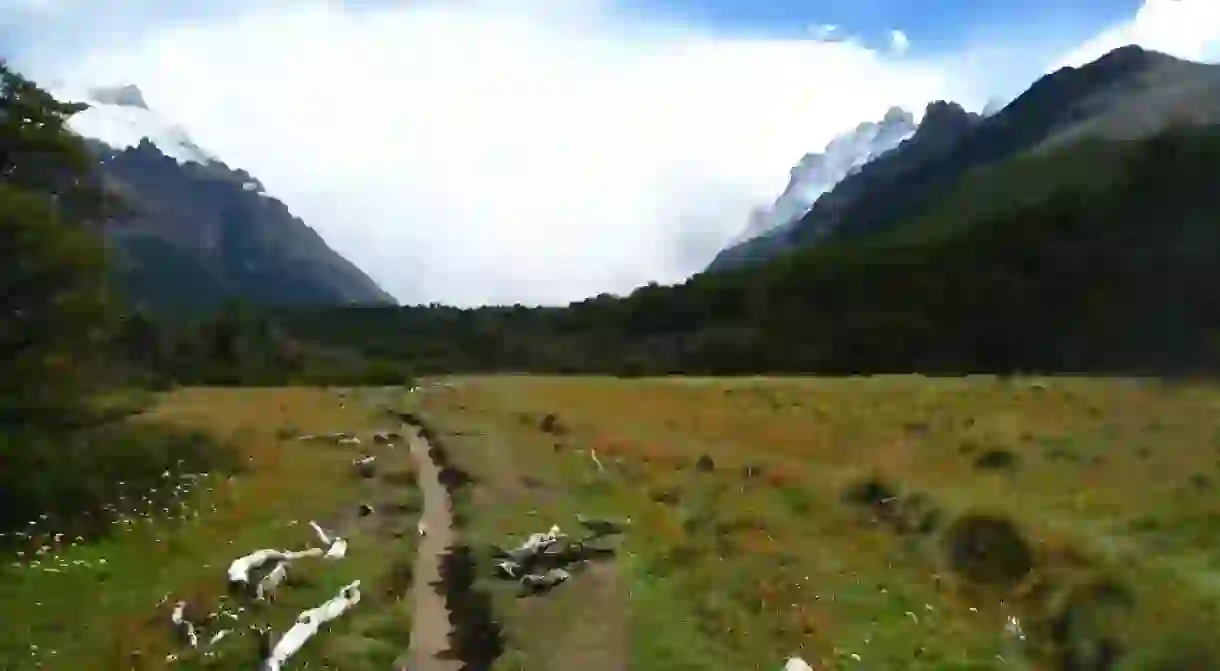The Ultimate Guide to Hiking in El Chaltén, Argentina

In order to enjoy the elements, sometimes you must bear them, and if you are under-prepared when embarking on a journey through the wilderness surrounding El Chaltén, it can make it impossible to enjoy yourself no matter how positive you are. On the other hand, a little extra preparation tailored exactly to the specific area and its characteristics can make all the difference between returning to town with a smile or a frown. Make sure you are not left high and dry, or even worse, wet and wind-wiped, when hiking and camping around the stunning, yet demanding El Chaltén trails.
Park ranger
No one knows the area more than the park ranger, and it is advised, especially on overnight treks, to consult the park ranger for any extra insight that may assist you along the way. Poorly marked turn offs that may lead you somewhere unplanned, certain weather patterns, perfect surfaces and places to pitch your tent, and even just little hidden gems off the main path that are good to check out, you lose nothing by consulting the park ranger.

Wild wind and whacky weather: what to expect and how to prepare
The biggest battle you are bound to face in El Chaltén is the weather, which, due to the high peaks and low valleys, can accelerate the already furious wind, causing immensely powerful gusts, and also strange weather patterns due to the shifting clouds. You can always strip off layers if you get hot, but if you didn’t bring enough, you can’t wrap yourself in your tent. So pack light, waterproof layers like Gore Tex windbreakers, and dri-fit shirts that wick away the water, and don’t absorb your body moisture if you sweat.

If you are camping overnight, be very, very selective where you pitch your tent. They have campgrounds listed on the longer hikes, like up to the famous Fitz Roy peak, but even these locations are susceptible to high winds. Obviously select an area that is even ground—this is just common sense for a good night’s sleep—but also be sure to pick somewhere with a thick surrounding of trees, or even a ridge or hill to ensure the gale-force winds are hitting rock, not your tent.
Second, ensure the ground where you are pitching is soft enough to welcome your stakes as you hammer them in, but not too soft that they will be ripped right out with the first gust. You might even want to lug a few heavy rocks to place on top of them once they are in place. Also, do not hold back when pulling your tent tight, as you will need all your energy for these hikes and a loose tent flap thumping all night is bound to keep you up, no matter how physically exhausted you feel.

Streams and fresh water
Packing efficiently, whether trekking or travelling, is a skill learned over numerous trips. You start to learn about the items you wished you had thought of, and items you brought that never left the dark corners of your rucksack. One thing that is a necessity but will weigh you down is the liquid of life, water. Luckily, being in the Park of the Glaciers, you will have a lot of fresh water streams that are usually marked, so you can fill up your water bottle or thermos as you go. For those a little apprehensive about drinking from fresh water, a very handy, durable item that will assist you massively, is a Steripen, which is a device that has a UV light that will kill virtually all bacteria in any natural water source. Stick it in the water, press the button, wait for confirmation, and quench your thirst.
Packing: food
Another necessity is of course food, and you will want to pack smartly when taking meals into consideration, so pack high density, calorie-rich edibles. Also, dehydrated foods where you only need to add water will ensure that you are carrying up the raw essentially as when you find a water source, you can simply add water and be on your way to replenish your muscles. Some good foods to consider are dried fruits, nuts, powdered peanut butter, dehydrated vegetables, and dry noodles and soup packs.

Packing: extras
This is not summiting Everest, but you want to ensure that your time in the woods is as smooth as possible, so a few extra things you may want to think about packing are the following:
Plenty of band aids, and mole skin covers as it can take minutes for a blister to form and days for it to heal, all the while you will be gritting your teeth in pain. A pair of tight, nylon athletic socks to wear directly against your feet, and under your big, comfy, wooly hiking boots so that the contact between your feet and fabric will be snug, smooth socks that prevent much movement between skin and cloth. Also, if you are planning on heading up onto the snow – it can linger all year round in some places – bring sunscreen, and even wrap-around sunglasses as that sneaky sun can do damage from all angles and at all times of the year. To list off a few more of the essentials you may have thought of, but also the basics that may slip your mind are a good knife, paracord, duct tape, moisturizer, ear plugs, zip ties, and a thermos.
At this point, you should be very well prepared and equipped to be getting a map into your hands, and confident that you have everything you need to conquer any obstacles that are presented. Also, as Murphy’s Law would have it, now that you are extremely prepared for anything, everything will be extremely smooth sailing, so get out there and enjoy the unforgettable scenery of Patagonia… wait… who was in charge of bringing the camera?













